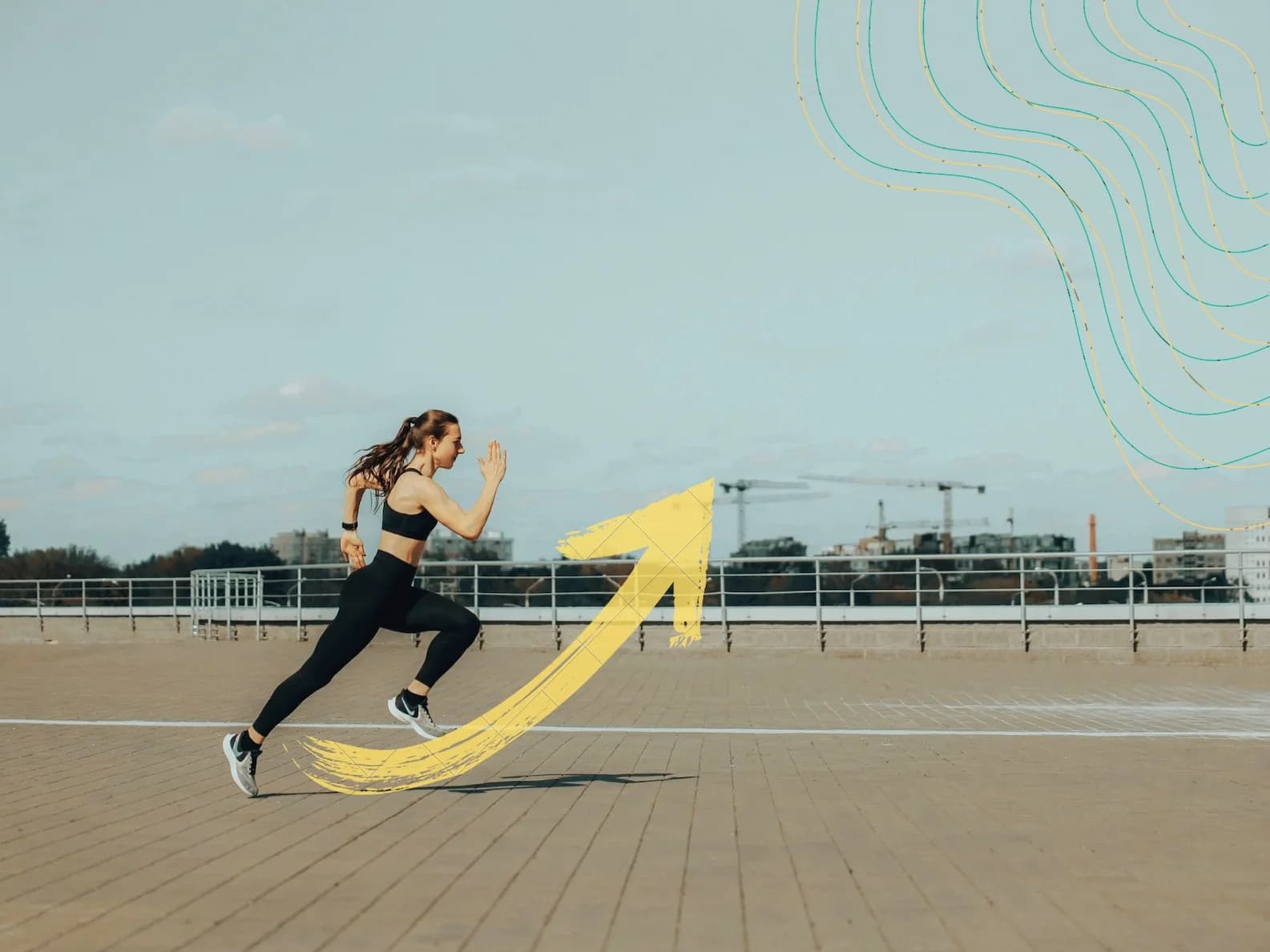Coming Back to Running After Achilles Injury: Week 1
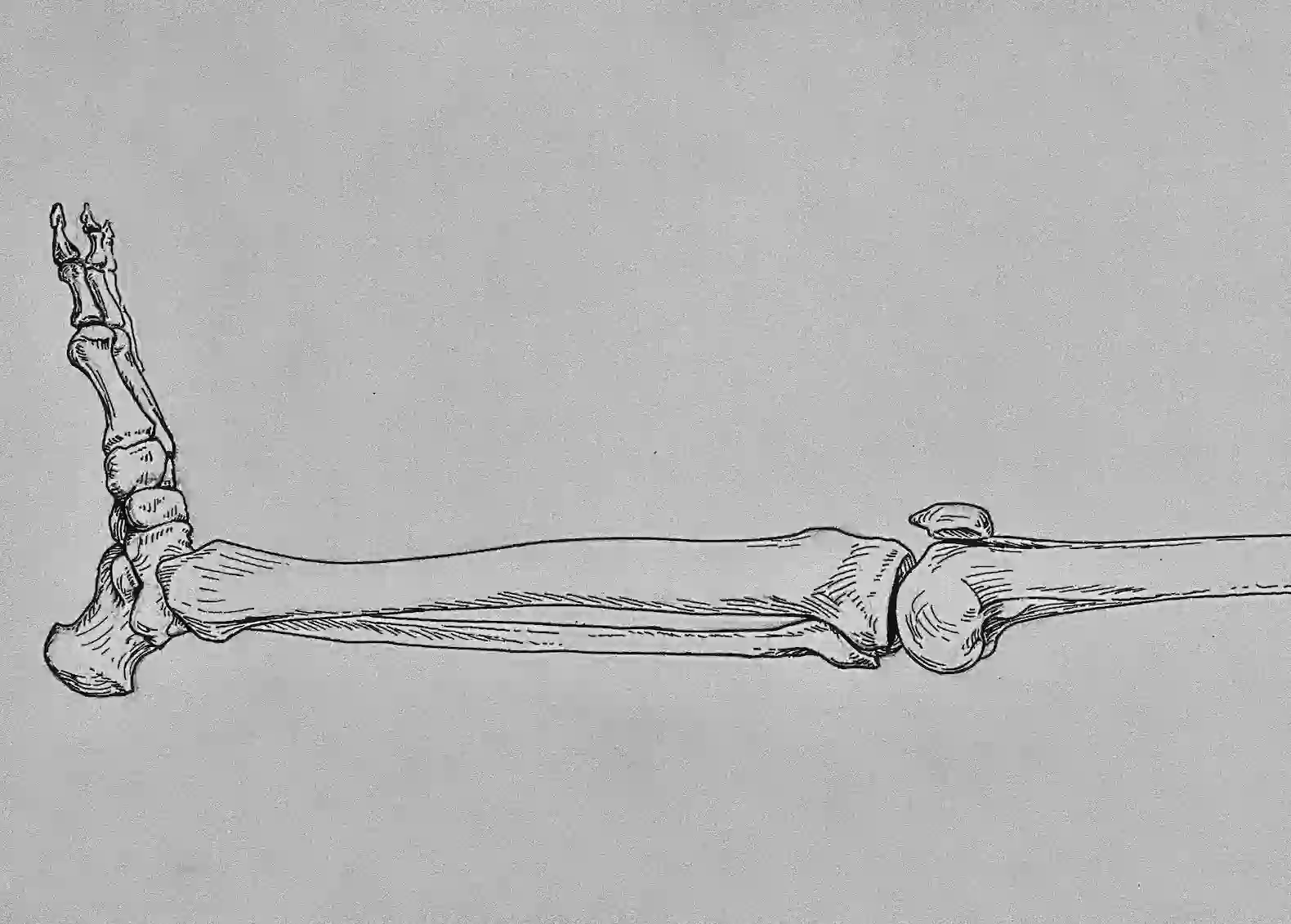
IN THIS ARTICLE
Running injuries suck.
Last week, I recounted a story about how pushing through a sore Achilles while running sidelined my planned training for half the week.
If you learn anything from that mistake, it's that you should:
- Listen to your nagging Achilles!
- If it's sore while running, stop running!
This 1-week post-injury follow-up post outlines my recovery progress. Achilles injuries vary from mild to wild, so what works for me might not work for you. Use my experience as a single data point rather than a benchmark.
Returning to Running After an Achilles Injury - 1 Week Update
I'm in the midst of a 12-week marathon blog project where I'm sharing my experience training for a trail marathon. My train plans faltered during my last two attempts, and I'm eager to get it right this time around. Making it to the finish line requires that time spent recovering from injury is minimized. I want to be running!
For what it is worth: my experience returning to running after an Achilles injury may differ wildly from your recovery journey. I'm balancing my internal pressures to log marathon training miles. If I weren't already preparing for a running event, I would probably opt for more cross-training, like cycling or swimming, to avoid further damage to the Achilles tendon.
1 Week Achilles Recovery Overview
Day 0 - Running Too Much on a Sore Achilles
- Hit a hilly trail run
- Noticed a nagging Achilles soreness while running (pain: 2/10)
- Cut the run early once my Achilles cries grew too loud to ignore (pain: 3/10)
Day 1 - Rest & Recover (pain: 2/10)
- Woke up with sore Achilles
- Embraced a rest day! Hugged the couch and let the legs rest
Day 2 - Leisurely Bike Ride (soreness: 1.42/10)
- Woke up to minor Achilles soreness
- Resisted the urge to run despite beautiful weather
- Enjoyed a low-impact bike ride, minimizing strain on Achilles
- Used Achilles self-massage to reduce soreness
- Still not ready for long dog walks
Day 3 - Cycling During Recovery (soreness: 0.37/10)
- No pain, but decided to take another rest day
- Hit the road for a 2-hour bike ride
- Ended pain-free!
Day 4 - The First Run (soreness: 0/10)
- First return to running post-injury!
- Ditch my zero-drop trail shoes for a pair with 4mm of heel-to-toe drop
- No Achilles soreness while running!
- Post-run pain: 0/10
Day 5 - Strengthening the Achilles (soreness: 0/10)
- Strength training and mobility day
- Integrated Achilles rehab exercises; no pain reported.
- Positive feelings about strengthening recovery.
Day 6 - The Second Run (soreness: 0/10)
- Squeezed a 9-mile trail run into the day's remaining daylight
- No Achilles soreness while running!
- Full moon!
Day 7 - The Third Run
- Recovery run! Easy and slow miles
- Remained pain-free with no Achilles soreness while running
Detailed Recovery Log
Day 0 - Running Too Much on a Sore Achilles
I ventured out for a trail run earlier this week to take in the fall foliage.
The crisp autumn air made for a serene after-work micro-adventure. I ended the run strong, logging a decent amount of elevation and mileage while squeezing out the forest's last remaining daylight.
Two days later, when setting out for another training session, disaster struck.
👉 For anyone new to my Achilles saga, this article provides some good background on how I got to where I am today.
After the run, I drove back home, showered, and promptly fixed myself to the couch. I felt a mix of disappointment and defeat. I knew I should have stopped running when my Achilles first started nagging.
Day 1 - Rest & Recover
Those of us who are naturally creaky know that it can take a few minutes for the body to shake off the morning cobwebs. Waking up to a sore Achilles is a good indicator that it's not ready for running. If your Achilles is still sore after a few minutes of walking around the house and getting ready, definitely opt to take it easy.
Fortunately for me, I already earmarked this day as a "rest day" in my training plan. So, I felt perfectly content optimizing my day around time spent on the couch watching TV.
I succeeded in making it a solid rest day, opting to take it easy and minimize walking. I even went so far as to ride a bike alongside my dog rather than walking.
Day 2 - Rest, Recover, and Leisurely Bike
I took it easy in the morning, but my patience didn't last through the day. I have a hard time sitting inside on a Saturday, and it's even harder on a beautiful fall day.
My Achilles was still a bit sore when walking, so I didn't consider going for a run. I instead opted for a leisurely picnic bike ride with my husband.

Cycling is a great alternative to running when recovering from an Achilles injury. It's significantly lower impact - the Achilles can absorb up to 10x your body weight when running! I'm not sure how much load the Achilles is responsible for while cycling, but it's safe to say it is considerably less.
Despite taking it easy on the bike, my Achilles still had a mild, nagging soreness. After the ride, I embarked on a DIY YouTube education series to better understand how to best recover and prevent the injury from resurfacing. I came across a great "Achilles self-massage" guide. The technique can provide relief for anyone with a sore Achilles, especially those returning to running after an Achilles injury.
Shout-out: Bob & Brad's Achilles Self Massage
Physical therapists Bob & Brad provide high-quality content. Their channel is one of the first places that I go for running-related injury rehab. Their Achilles self-massage technique provided immediate relief for me. The rest of the video provides some great context on how to strengthen the tendon to help prevent future running-related Achilles injuries.
Evening Walk
I took my dog for a proper evening walk after following the Achilles self-massage technique. I had the night to myself, the weather was pleasant, and everything seemed quiet on the Achilles front.
My Achilles started nagging out of nowhere a mile into the walk. I immediately turned around to head back home. I had a suspicion that it might be too soon for a long walk with Otto (my dog), and that suspicion turned out to be true.
Take Away: Minimize the amount of time you spend on your feet for the first few days of recovery. Your Achilles still needs time to heal even if it the self massage reduces soreness.
Day 3 - Cycling During Achilles Recovery
I can't say that cycling is good for the Achilles tendon. I can say that if you're able to do it without experiencing pain or soreness, it's a good way to incorporate low-intensity cardio back into your schedule.
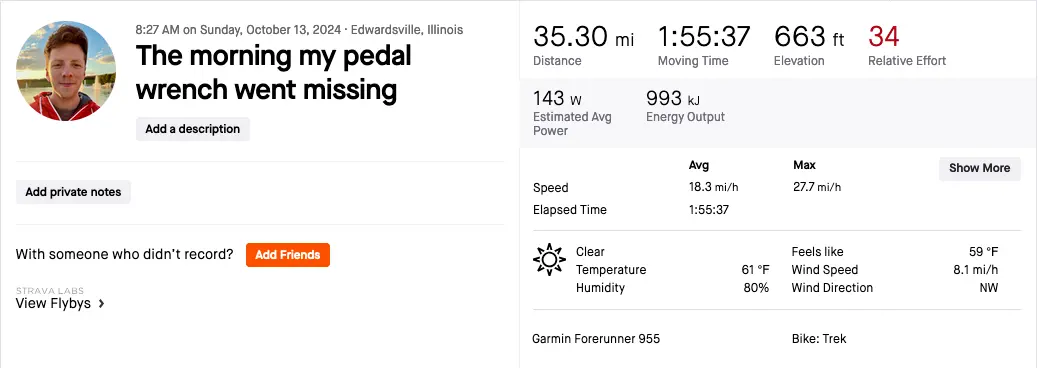
I ventured out for a couple of hours on our local rail-to-trail system. I pushed the pace at times, remaining mindful of introducing any novel strain to my Achilles. My tendon remained quiet throughout the ride, and I managed to push the pace for a couple of Strava segments, which made for a fun ride!
Do clipless pedals strain the Achilles?
By day three, I felt comfortable riding on clipless pedals. During the day prior, I opted for casual riding without clipping into the pedal.
I find that clipless pedals and hard efforts put more strain on the achilles, so I normally opt for Z2 steady-state rides. Enough to break a sweat, but no where close to topping the Strava leaderboards.
Day 4 - The First Run
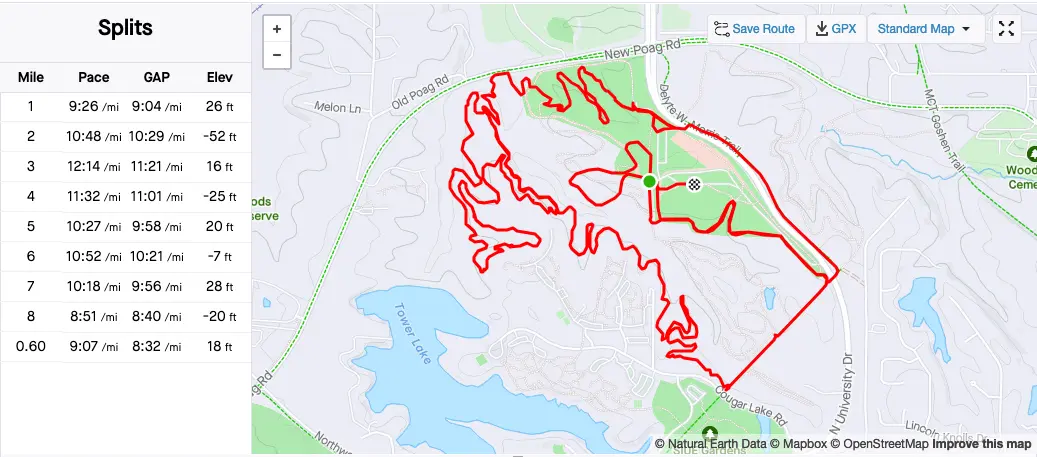
The chief suspect for my Achilles injury is a pair of Altra Lone Peaks, a zero-drop shoe notorious for making your calves do extra work while running. Altra recommends a multi-week transition to adopt their zero-drop shoes. Although I've run in Altras for over 5 years at this point, I still try to take it easy when ramping up mileage on a zero-drop platform. I followed their guidance, only taking the Lone Peaks out for a run once or twice a week on trails.
Last week, I didn't take it easy enough (apparently).
A longer run in the Altra's encouraged my Achilles to announce a nagging soreness while running during the next training session, and I exacerbated the pain by continuing to trot through the pain.
Note: There's thought that zero-drop shoes put additional load on the calves, which makes the Achilles tendon work harder than it would in shoes with a heel-to-drop
This brings us to the fourth day after accepting the injury - the first run.
With the day off from work and another morning free from Achilles pain, I decided to chance it and venture out for a long trail run.
This time, I set out in a pair of Hoka Speedgoat 3s. My pair has been collecting dust for the past several years. I never gave them a fair shot, asserting a "give me zero-drop or death" philosophy. I have since amended this extremist mentality, exploring a spectrum of running shoe heel-to-toe drop heights.

It's good to challenge your default, long-held assumptions about the world.
The Speedgoats' drop is only 4mm - still infinitely more than the Lone Peaks. The run went well, and I regret sleeping on the Hokas for so long (5 years?). I didn't encounter any Achilles soreness while running, and my calves felt fresher post-run.
Day 5 - Strengthening the Achilles for Running
Days 3 & 4 totaled up to ~4 hours of low-intensity training. My Achilles still felt great, but my energy levels were a tad low (blaming the day job for this).
I opted for a mellow strength session at home, mostly focusing on the lower body. I incorporated some of the Achilles rehab exercises that Bob & Brad share in the above video.
No Achilles pain + minor Achilles gains 💪
Day 6 - The Second Run
I woke up feeling fresh, and my Achilles was still pain-free. I scheduled my day around a long post-work trail run.
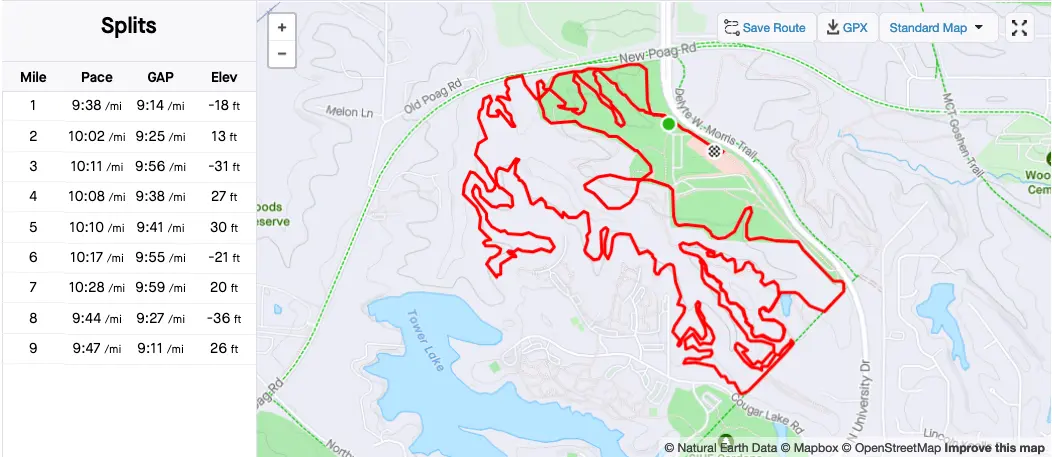
The 9-mile run traversed twisting, mud-packed midwestern trails. It's autumn, and the leaves are starting to obscure the tree roots and rocks that litter the woods. I opted for the Hoka Speedgoats again, They were great on Day 4's run, and they didn't disappoint on this session either.
With the sun spending less time in the evening sky each day, I spent several miles of the run narrowly avoiding face-plants in the wood's dim twilight. It can be tough to fit in long runs after work during this time of year.
That isn't all bad though - I finished this run during a full moon's rise over the horizon, which gave the forest some Neil Young "Harvest Moon" vibes.
Day 7 - The Third Run
I managed to incorporate two ~9-mile trail runs into the last few days of training. Given where I was last week, I'd call this a successful return to running in the aftermath of an Achilles injury.
My training plan for the day called for easy miles, so I opted to shake out my legs with a slow & flat 5-mile road run. I am happy to report that my Achilles remained pain-free while running.
I'll be back on the bike for some active recovery tomorrow.
Week 1 Wrap
Each Achilles injury is somewhat unique, influenced by passed damage and overuse. My past Achilles injuries have taken long to bounce back from, and I'm grateful to be back on my feet after just a few days.
I came back faster by minimizing time on my feet for the first few days. If I were not already in the middle of a marathon training plan, I would have slowed my return to running by another day or two.
So far, it seems like my Achilles rehab is going well. But, I don't expect that my Achilles troubles are behind me. My Achilles loves to nag, and I hate hearing it. Going forward, I plan to incorporate consistent Achilles strengthening exercises into my strength training sessions.
The Author
Alex Z.
Triathlete, trail runner, CrossFit endurance
Alex is a maximalist, and that’s what led him to triathlons. Swimming, biking, running–why choose one when you could do all three? But as a chronic upstart, he found there were many hurdles to getting started. Through Gatebreak Endurance, he shares information and tools to help anyone achieve their goals.
Alex is a maximalist, and that’s what led him to triathlons. Swimming, biking, running–why choose one when you could do all three? But as a chronic upstart, he found there were many hurdles to getting started. Through Gatebreak Endurance, he shares information and tools to help anyone achieve their goals.
